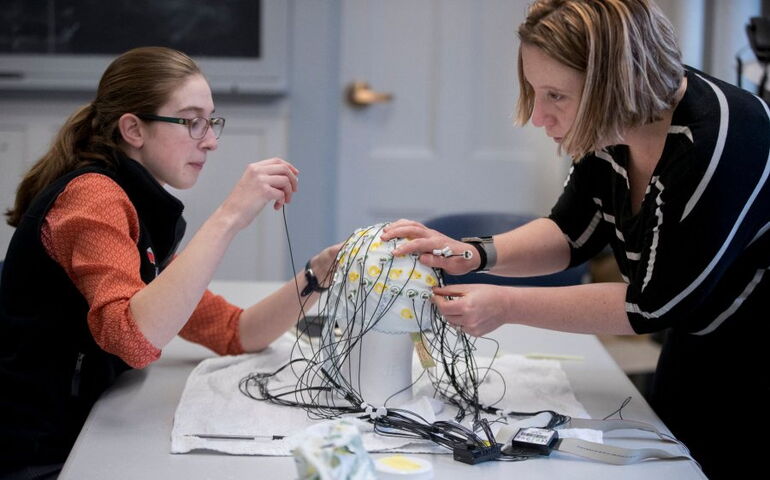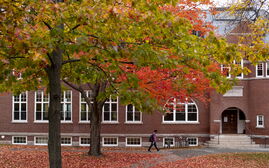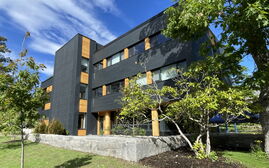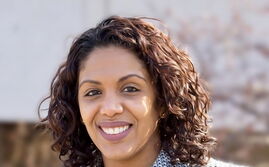Bates College awarded $4M federal research grant, its largest ever
 Courtesy / Bates College
Bates College professor Michelle Greene, right, and a student researcher work to prepare a brain-wave test in Greene's neuroscience lab. With a $3.97 million grant, she will lead the creation of a vast research database of video images.
Courtesy / Bates College
Bates College professor Michelle Greene, right, and a student researcher work to prepare a brain-wave test in Greene's neuroscience lab. With a $3.97 million grant, she will lead the creation of a vast research database of video images.
Bates College in Lewiston has received a $3.97 million National Science Foundation grant — the school’s largest federal grant ever — to create a vast research gallery of videos that may someday help advance the artificial intelligence of computer systems.
In collaboration with North Dakota State University and the University of Nevada, Reno, Bates will use the grant to capture over 240 hours of video that depicts what people see each day, according to a news release Friday.
Potentially millions of video images will be catalogued in a publicly searchable database, and will ultimately support research in fields that rely on the analysis and recognition of images, such as neuroscience, psychology and artificial intelligence.
Over the four-year span of the grant, 28 Bates students will work with the project’s principal investigator, Assistant Professor of Neuroscience Michelle Greene, to launch the Visual Experience Database.
Some may serve as videographers. Wearing cameras that simulate human vision, as well as devices to track head and eye movements, they’ll conduct routine activities such as walking, shopping or touring a museum, according to the release. By enlisting different observers at each of the three colleges, the project will record how changes in environment, age and task affect the act of looking.
Currently, researchers obtain much of their visual data from public online sources such as YouTube. But because these images were not intended for scientific purposes, they are compromised by the perspectives of their creators.
The reasons someone may shoot a video subject, frame or edit the video, or choose to upload it all diminish the material’s value as data, Greene said in the release. Such “biases exist at every level,” she said, “and all of the databases that we’ve been using for years are subject to them.”
The VED assets, she said, will be created specifically to represent ordinary scenes and will be subject to experimental controls.
The grant, a competitive award from the NSF’s Research Infrastructure Improvement Program, will also fund the development of software for the database and student workshops on using such “big data” applications.
“If we can take the next generation of students and get them the best skills, the kind of experience I wish I’d had as a student early on, that is a key part of the workforce development component of the grant,” Greene said.














0 Comments